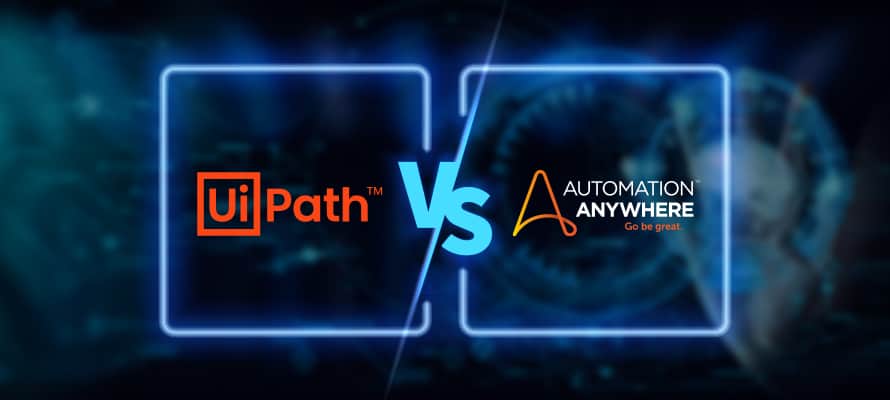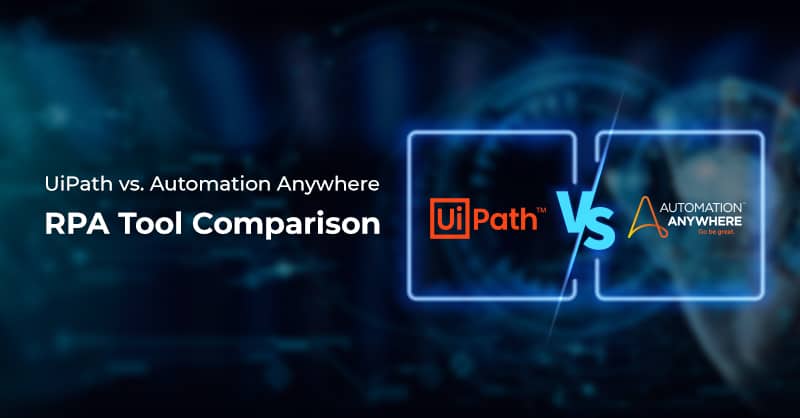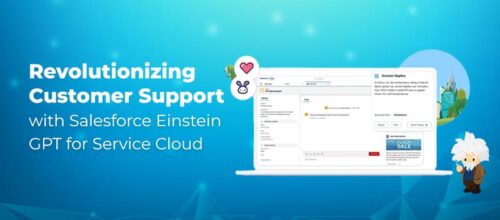UiPath vs. Automation Anywhere: RPA Tool Comparison

Written by Priya George
Content Writer
May 29, 2023
As businesses continue investing in Robotic Process Automation (RPA) tools that automate tedious business operations and automation tasks, it is vital to understand the differences UiPath vs. Automation Anywhere (AA) when selecting an RPA tool for your organization. This blog post will review these top-tier RPA solutions and discuss their features and unique benefits. This comparison will help you make a more informed decision when choosing which RPA tool best suits your needs.
Benefits of RPA Tools: How They Aid Business Processes
With the advent of Automation in business processes, many mundane manual tasks can now be automated with the help of Robotic Process Automation (RPA) software. As a result, businesses have increasingly been turning to this technology to increase efficiency, productivity, and accuracy. RPA tools such as UiPath and Automation Anywhere allow users to automate business processes without writing a single line of code. This eliminates tedious, time-consuming manual tasks while ensuring accuracy and data integrity. Furthermore, these processes are easy to set up and maintain, making them an excellent business solution.
UiPath Automation
UiPath is a powerful, intuitive platform used to automate business processes. This Robotic Process Automation (RPA) offering is user-friendly and enables customers to create solutions using UiPath tools quickly. Specifically, the company released an integrated suite of products that includes UiPath Studio, which allows users to build UiPath bots using drag-and-drop features with a graphical user interface. UiPath Orchestrator manages those bots and optimizes workflows through scalability and scalability of the tasks executed by bots, and UiPath Enterprise provides solutions for automating large volumes at scale. The UiPath platform aims to help organizations improve efficiency, decrease costs, and increase customer satisfaction by automating mundane administrative tasks. Standout features of the UiPath RPA platform include Automation hub, Orchestrator, process mining, task mining, task capture, Studio X, and Test Manager.
Read our blog to understand how you can increase the ROI of your automation program with the help of UiPath Insights and Automation Hub.
Automation Anywhere
Automation Anywhere is an enterprise-grade Robotic Process Automation (RPA) solution that allows users to set up and manage automated processes quickly and easily. The company’s flagship product, Automation Anywhere Enterprise, enables customers to automate mundane activities like data entry, movement of files across different systems, customer service interactions, and more. The software also provides customers with advanced features, such as analytics and reporting capabilities, object recognition, natural language processing (NLP), image recognition, AI/ML, and AI-based Automation. Standout features of AA include Automation 360, RPA security, IQ Bot, digital assistant AARI, Bot Insights, and Bot store.
Read here how companies can leverage Automation Anywhere for seamless business integration.
UiPath vs. Automation Anywhere
For comparing UiPath vs. Automation Anywhere (AA), we have drawn up the comparison along several vital parameters. First, both UiPath and AA can execute attended and unattended automation. This capability means both platforms can automate repetitive tasks and more complex processes.
Architecture
The primary difference between UiPath vs. Automation Anywhere lies in their respective architecture. AA is mainly designed according to a task-based model, which involves building task bots that can interact with each other. At the same time, UiPath is based on a more traditional workflow model. This architecture means that with UiPath, processes are automated by creating flows that connect activities sequentially. On the other hand, AA allows users to focus on automating individual tasks without creating an entire flow for them. With UiPath robots, business users can only create automation projects through a flowchart. These flowcharts can either be standalone or included within more extensive procedures. Whereas with Automation Anywhere, the automation process can be created through flowcharts, line-by-line, and hybrid development options.
Scripting Languages
Regarding scripting languages, Automation Anywhere supports JavaScript and VBScript, whereas UiPath uses its proprietary language – UiPath Orchestrator. For those familiar with coding and programming languages, this can be considered a disadvantage when using UiPath, as they will have to learn the new language to use it efficiently. Furthermore, to manage a UiPath robot, the users will need specific programming skills, while for AA, programmers from different areas can contribute.
Level of Automation
Both platforms offer different features and capabilities regarding scalability and versatility. Automation Anywhere has features such as bot management tools that allow users to monitor bots at large-scale deployments. However, UiPath offers a wide range of pre-defined activities, including but not limited to web automation and artificial intelligence (AI) services such as computer vision and natural language processing (NLP).
Pricing & Licensing Model
Both Automation Anywhere and UiPath have a per-bot licensing model, which means you only pay for the number of bots you use. Document processing engines in both offer bundles for a fixed number of pages per period. When it comes to the pricing comparison of UiPath vs Automation Anywhere, many business users find UiPath to be the more costly platform.
Platform Architecture
UiPath is designed explicitly for Windows-based systems, as it functions and runs on a .NET framework. On the other hand, Automation Anywhere is more versatile and works with various operating systems due to its Java platform design. Thus, the latter RPA platform has Java/microservices architecture, while UiPath relies more on client-server.
Note: When sites mention that Automation Anywhere has a client-server, they typically refer to AA v.11- the older version
Ease of Use
Automation Anywhere stands out among other automation platforms for ease of use, whereas with UiPath with more set frameworks and best practices is more difficult to use and requires more technical expertise.
Deployment Options
UiPath is the ideal choice for smaller businesses and those who do not have the required infrastructure to deploy an on-premise solution, thanks to its convenient cloud-based option. Automation Anywhere, however, tends to be deployed by most customers as an on-premises product but also offers a hassle-free cloud-native alternative.
Machine Learning Capabilities
Both Automation Anywhere and UiPath have document processing if one acquires additional licenses. However, while AA has had document processing capabilities for a while, UiPath has only recently introduced this capability.
Read our blog to get help deciding between UiPath vs. Blue Prism.
What to Expect from Royal Cyber's Robotic Process Automation Technologies and Services
In summary, choosing UiPath vs. Automation Anywhere involves various factors, including the product’s overall fitment with your existing setup, affordability according to your company budget, operational support & scalability requirements. Royal Cyber’s expertise with both RPA vendors can help you make a sound decision that best suits your requirements. Our deep RPA software knowledge and robotics & AI expertise enable us to achieve successful automation outcomes. We also offer custom build bots and solutions based on your individual needs. If you’re looking for guidance in setting up RPA solutions or have questions about either of these RPA platforms, reach out to our experts today!
Recent Blogs
- Learn to write effective test cases. Master best practices, templates, and tips to enhance software …Read More »
- In today’s fast-paced digital landscape, seamless data integration is crucial for businessRead More »
- Harness the power of AI with Salesforce Einstein GPT for Service Cloud. Unlock innovative ways …Read More »



